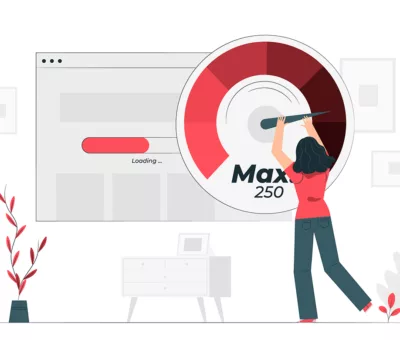If you are examining website optimization opportunities, believe in operating an entity cache. A WordPress includes multiple PHP objects that are frequently built, started, and fired by the remembrance administrator, Cache Optimization. However, these measures may overfill your server, making your site delay and understanding errors.
It is very helpful to all the users so that they can access the website at an effective time. You can ensure that your speeding time of the site is improved and you can make an instant appearance to the users so that they do not get away from your site.
The outcome of the unresponsive website will show poor user knowledge and turn guests out, driving financial loss. To control this issue, ensure entity covering is allowed on your WordPress site, cache optimization. It will help to optimize your server and upgrade the website’s response system.
In this blog, you’ll know what a thing cache is, its benefits, and how it can help your WordPress site. So are you ready to get the knowledge about the cache system so that you can overcome the problems? Let’s start understanding what website object cache is so that you can make your website Speed.
What Is an Object Cache?
It is a server-side caching process that involves duplicating database question results to secure data supply. This can stimulate the site’s implementation, facilitate the server’s load, and scramble up page loading periods.
How Does an Object Cache Operate
It is a server-side caching class that replicates and organizes data in the server, facilitating duplicated and disproportionate questioning. Let’s glimpse how it operates in four phases:
- When a user reviews your website, he transmits an HTTP proposition to the net server.
- Once the server receives and keeps the proposal, it endures the data or support to the browser.
- If you allow entity caching on your website, the waitperson will replicate the user demands in your cache.
- The request is sent by the browser, the server will deliver the data from the cache rather than the issue in the database.
However, if a replication doesn’t live, the waitperson will provoke a new development and design a copy for prospective use before transmitting it around to the browser.
Object Cache Benefits
In this area, we’ll overview the 2 primary essential explanations for utilizing object caching:
- Entry data in microseconds: It races up the data recovery procedure since the cached range is unrestricted on the waitperson. Thereafter, it enhances PHP execution duration and optimizes the website’s interpretation.
- Reduce server workload. The thing caching underestimates the number of database questions by duplicating injunctions. It can handle multiple server jobs, such as producing the cached range, thus decreasing the burden, particularly during high-traffic terms. Similarly, an entity cache can give cached recommendations to numerous servers or grids, enhancing accessibility and securing the server’s operations efficiently.
WordPress Object Cache
The WordPress CMS is developed on this mechanism and it is called WP_Object_Cache that stores new things automatically and transmits from the database to the PHP memory.
A WordPress thing cache causes the cached range available and retrievable utilizing a legend, and a special identifier to demonstrate distinct access in the database. This device is non-persistent, caching things for a one-page limitation. Once the submission is done, the WordPress thing caching agency will clear the cached range.
The object cache is permitted by default to provide your site handles efficiently. Here are the common wp_cache positions:
- wp_cache_set – counts new data to the stash by overwriting the current data. If the legend does not exist, the operation will complete the data collection.
- wp_cache_add – if the key lives, this procedure won’t count the data and will produce errors. Otherwise, it will count the data to the store.
- wp_cache_get – if the store lives, it will produce its importance. If it doesn’t, the process will produce a false.
- wp_cache_flush – removes all cached scope.
- wp_cache_flush_group – removes all cached ranges in a station if the object caching environments keep it. If it doesn’t, the procedure will empty all cached information.
- wp_cache_replace – if it exists, it will replace the range. Otherwise, it will return wrong. This process is identical to wp_cache_set(), besides it doesn’t count the cached thing if the cache lives.
- wp_cache_delete – pulls data from a distinct store key.
- wp_cache_add_non-persistent_groups – orders the entity caching means not to repeat the class or list of companies in the continued warehouse. This process is extremely advantageous when caching the range that should be known best for a one-page hurdle. Note that only numerous caching plugins involve wp_cache_add_non-persistent_groups.
If you own a small and low-traffic website, WordPress can manage all the cache objects.
However, extensive WordPress sites require persistent explanations that will cache things across numerous page limitations. These instruments can enhance your website interpretation by scrambling up the database question transfer while downsizing your server’s workload.
On top of that, the constant caching agent can boost traffic capability, supplying more satisfactory user knowledge and enabling you to scale your company. For this explanation, WordPress hosting strategies start with minimal costs.
Conclusion
Object caching concerns keeping database questions on the server. In this course, when a browser transmits a matching request, the server produces the cached entities rather than bringing the scope from scrape. Object cache can help to optimize a website’s arrangement, enhancing its user knowledge. On top of that, allowing it can minimize your server hurdle by facilitating queries, thus improving the answer period.
The component is permitted on your site by insolvency, cache optimization. However, it only caches range on a single page burden and is qualified for a small-scale site.





Leave a Reply